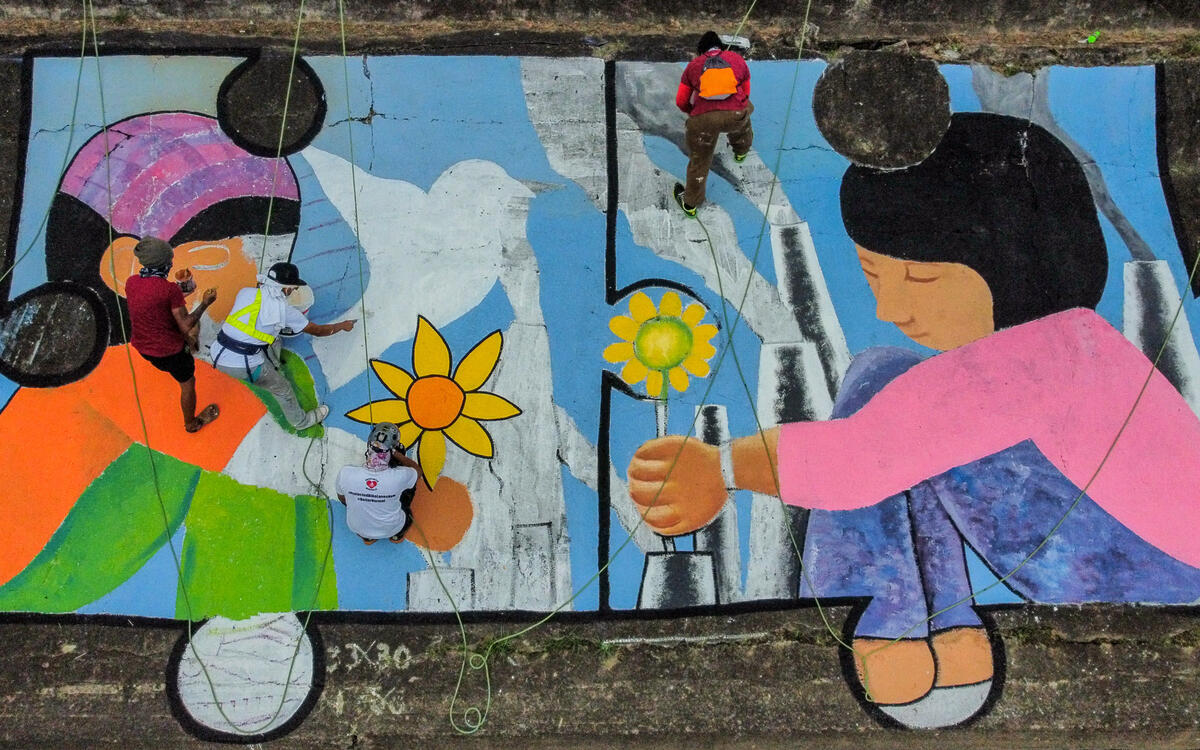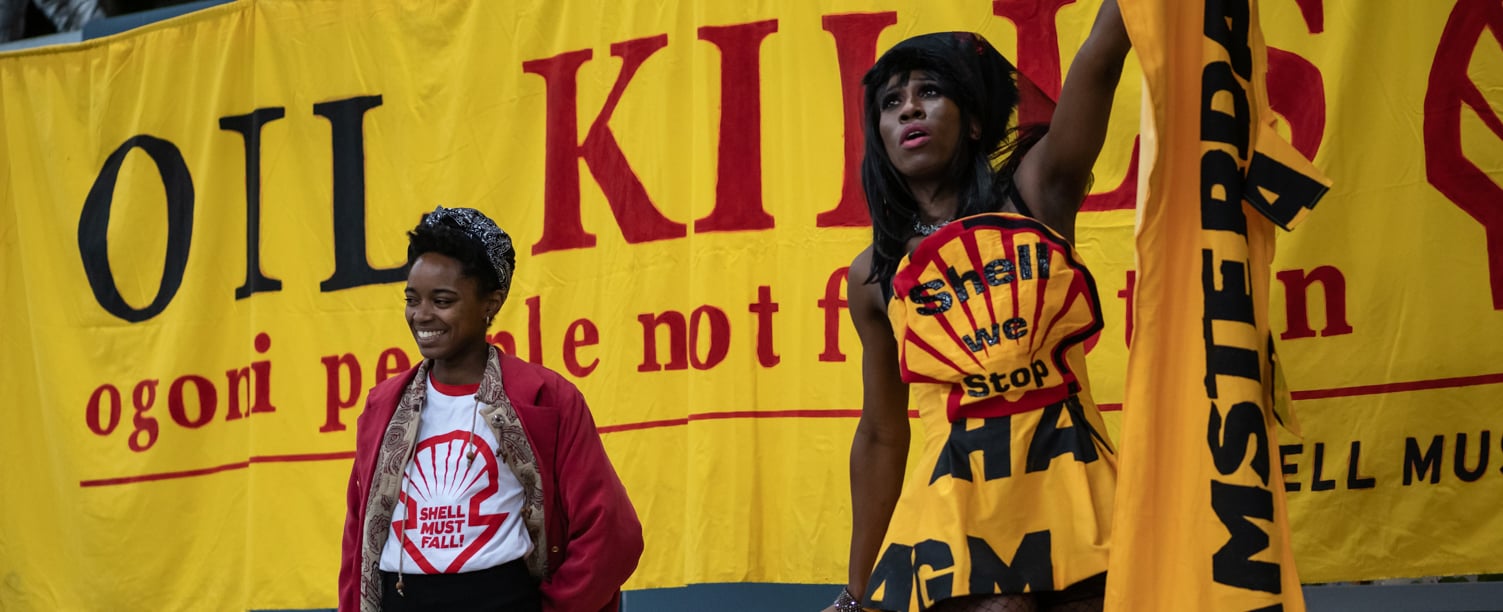A conversation with Luana Lila of Greenpeace Brazil about storytelling in restricted spaces and why stories are crucial for achieving campaign goals.
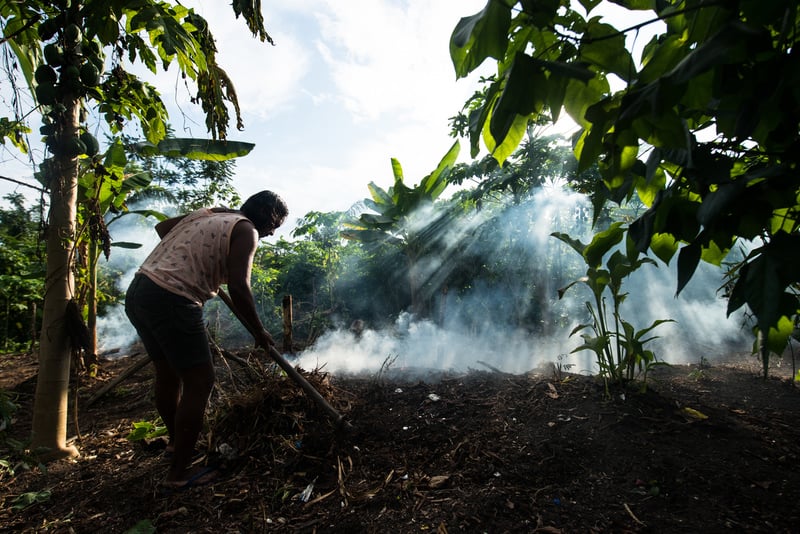
Luana Lila lives in Manaus where she is the head of communications at Greenpeace Brazil. She moved to this part of the Amazon seven years ago, to work with Greenpeace’s Amazon campaign. In her work, she helps craft stories that connect with people on an emotional level. Lila and her team use storytelling tools to identify what dominant narratives are at play in Brazil and how to counter these narratives with stories that further their campaign goals. Storytelling is crucial to campaign work at Greenpeace Brazil, Lila says, and offers powerful ways to connect with audiences in an increasingly restricted democratic space.
Our conversation has been edited and condensed for clarity.
Luana, what kind of work do you do at Greenpeace Brazil?
I lead the communications team, with a special focus in storytelling. Our work embraces the necessity for Greenpeace Brazil to create more narratives and stories that connect with people on an emotional level. If we want to engage with people, we have to really be able to tell stories that can inspire people to drive change.
Brazil is known as an environmental country with plenty of biodiversity. But we also have many problems. In our work, we tackle the deforestation of the Amazon, the fires and loss in biodiversity. We have long worked with Indigenous Peoples, supporting their struggles. We believe and defend the recognition of their original rights and for the protection of their lands. We recognize the fundamental role they play in global conservation strategies and we help to monitor and denounce the expansion of illegal activities over their lands, such as illegal logging or illegal mining.
More recently, the arrival of COVID-19 made us change and adapt our work to be able to support the imminent danger that Indigenous communities are exposed to. The spread of the virus across the rivers of the Amazon, in places with remote access to any kind of health assistance, led us to create a project called Wings of Emergency, in partnership with other organisations, and to use the Greenpeace Brazil airplane to provide emergency aid for Indigenous people that live in remote places that are very difficult to access.
We also challenge the industrial agricultural model promoted in Brazil, based on monoculture, which concentrates land in the hands of few and adds pesticides to our environment. And it’s very important that we also closely follow the political issues here in Brazil, and how the current government is dismantling environmental policies and agencies in order to minimize the protection of the Amazon and other biomes. All of these issues are connected—these are all many different aspects of the same problem.
“Storytelling helps us to slow down and look at the bigger picture.”
How does storytelling help you address these issues?
Brazil is facing a moment of heavy dismantling of the environmental agenda. And that forces us to be very responsive. In the past couple years, Brazil has witnessed the collapse of the mining dam in Brumadinho, which was one of the biggest environmental crimes in Brazil. Then we saw the massive fires in the Amazon and other biomes, which are repeating in 2020. Then, the oil spill: one of the largests environmental disasters in the history of the Brazilian coast. So, we always need to be really responsive because of the disasters that are happening or because of the political context.
When operating in a very dynamic and ever-changing landscape, storytelling helps us to slow down and look at the bigger picture. This means we are more strategic and can focus not only on the immediate response—although this is often necessary—but also on finding ways to tackle the dominant narratives and the main problems we have in Brazil. The current government operates based on harmful, misleading dominant narratives and I think for Greenpeace Brazil it’s really important to connect the need to protect people’s rights with the need to protect the earth. This connection is not always clear to people and I think we can help show those connections through storytelling.
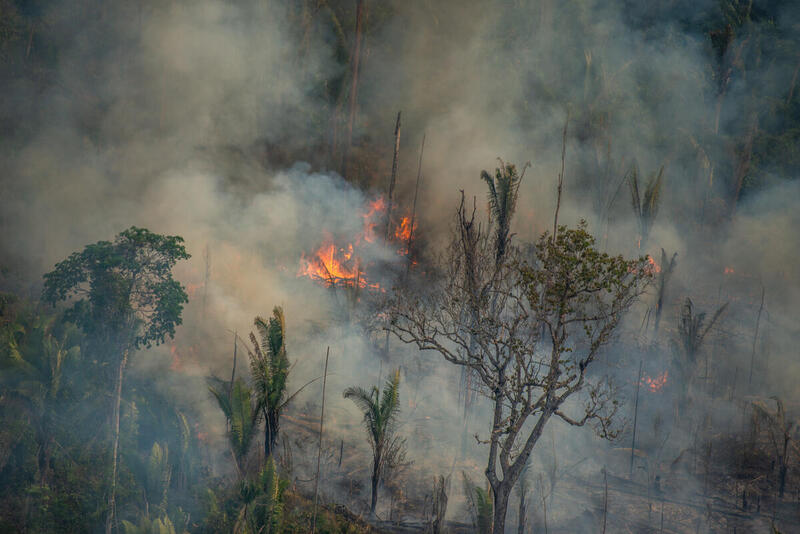
How do these dominant narratives impact your work?
It is important to counter dominant narratives to achieve our goals. One of the main dominant narratives that we see in Brazil today says economic development and environmental protection are incompatible, as if the protection of the Amazon was in opposition to the development of the country. It is almost like saying that Brazilians must choose between protecting nature or economic development.
Another dominant narrative involves nationalism and sovereignty. The way this manifests is by claiming legitimate demands from NGOs, such as the protection of the Amazon and its people, are unpatriotic interests. How do we take back these narratives for the values that we stand for, such as human rights, equality, justice and a healthy environment? Storytelling techniques help us reshape these stories and develop campaigns aimed at protecting the environment and people’s rights.
“People react to stories and stories inspire change.”
How do you build stories into your campaigns?
For more than 20 years, Greenpeace Brazil has been working to protect the Amazon from threats by powerful economic forces, like industrial agribusiness and the oil industry. Now under the current government the scale, intensity and the speed of the threats are huge. This new reality requires us to get into a different mode of campaigning—one in which storytelling and emotional narratives are the key to building trust and agency for positive change.
With the support of Greenpeace International Storytelling team, we have been deepening our understanding of Brazilian audiences and how to build powerful value-based narratives that can counter dominant narratives and inspire people to take action for a better Brazil.
Recently, we created a series of 11 videos called Arandu, which means “to listen to time; understanding; knowledge” in Guarani and Kaiowá Indigenous Peoples languages. This series was a big success on our social media channels. One video features the story of an Indigenous woman who defends and cares for the Amazon and the value and the connection that she has with the earth. Another video features a woman who shares how climate change impacts her community’s daily lives, their common belief, their shared sense of community, their relationship with nature, and so on. These are one minute videos, direct and simple, that connect Indigenous vision and values about the environment with the current challenges they face. We built the series with images that we collected throughout the years of working with Indigenous people in different projects. Storytelling helps us show that it is people—and not Greenpeace—who are the heroes and protagonists of their own stories. We hope that these stories of courage inspire many more to act for positive change.
I want to talk a bit about the space that you’re operating in at the moment. Last year, 24 environmental defenders were killed in Brazil, according to a report by Global Witness. Then, you have a president who is disparaging the media and disparaging environmental and human rights groups. How does storytelling help your campaigns navigate this increasingly restrictive space for activism?
I think that the moment we are living here in Brazil is very serious. It is about the Amazon, it is about the environment and about human rights. But above all, it is about democracy. You start to see some situations in which the spaces for dialogue and activism become more restricted or criminalized and the violence against those who stand up for their rights is getting worse. Recently, the Conselho Indigenista Missionário (CIMI) annual report on violence against Indigenous Peoples revealed a very worrying situation. According to CIMI, land grabbing, mining and theft of wood, among other violence, intensified rapidly and aggressively in 2019 (the year that Bolsonaro government started), which results in more threat to the lives of these peoples. Sadly, Brazil is one of the most dangerous/deadliest countries for environmental activists in the world.
We see now the government denying or contesting official data about deforestation with fake information or misrepresentation of numbers. Fake news is very popular in Brazil. Why? Because it triggers emotional responses in people. It’s easier to create an appealing title, appealing video if you are not committed to the truth. At Greenpeace, we believe in science and we are totally committed to the truth. But the truth sometimes is not that interesting. Sometimes it’s scientific and thus complex. Sometimes it seems to be from a reality really far away. For example, for many people in the south and southeast and the rest of the country, the Amazon is a very distant place. The Brazilians who don’t live here don’t know the Amazon. With storytelling we can tackle these issues because we can transform things that are scientific or are really distant into something that people can understand and can engage with on an emotional level. And storytelling gives us these tools. It doesn’t matter if the reality is far away. If you find the right values and the right way of telling the story, people will connect with it. That’s the same for Indonesia, for the Arctic.
As every storyteller knows, we are moved by stories. People react to stories and stories inspire change. Sometimes a story will inspire change of an individual habit and other times it will inspire taking action on an issue. And I think that’s why every organization should be looking at how to make their communications connect with the emotions of people.
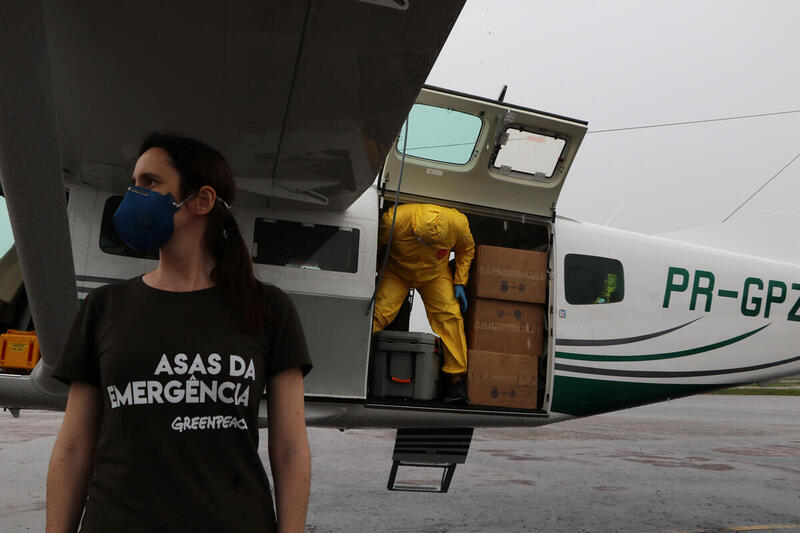
What advice do you have for other campaigners and activists and organizers who operate in similar restrictive spaces as you do in Brazil?
The current realities in Brazil demand a lot of reaction from civil society. Many terrible things are happening regarding environmental and human rights issues, and it is clear that it is crucial to react to them in order to expose and denounce. However, my advice is to break away from always being in “reactive mode.” Take the time to analyze the situation and use storytelling tools and techniques to really understand first what you want to say and what are the dominant narratives at play. What values are resonating in people’s daily lives that are leading them to act in the ways we are seeing these days? And how can we build on that towards a better reality or a change in the current situation? When you put your whole energy and capacity into responding, you are not leading the discussion or the issue that you think is relevant, you are just responding and reinforcing the issues and frames of others.
What I’ve learned working in communications is that after some time, reacting alone is not enough. People seize to connect with you. You need to balance responsiveness with the ability to analyze the situation and try to bring hope to the people. It’s important to tell stories that speak to people and make them not only understand what is at stake, but also feel inspired to reflect and take action. We are still learning a lot in Brazil and we have a lot to learn from other countries as well. That’s another advice: We have to learn more from each other.
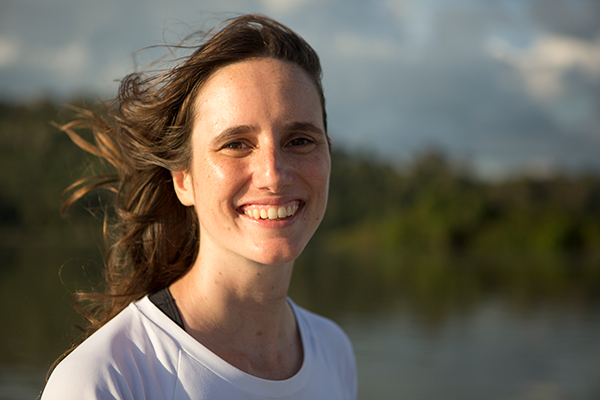
Can storytelling be a form of activism?
I think storytelling is a tool for activism. If people don’t understand and don’t connect with what you are saying, you cannot do anything. Nowadays, we have even more restrictive spaces also because of the pandemic. You cannot go into the streets, so how do you build the resistance that is needed? How do you build the power and the energy you feel on the streets, for example? One of the ways is with storytelling. Maybe it’s not the thing that will solve everything, but it’s one of the ways that you can start and bring people to understand what is really happening and help them connect with it.
One thing we did here in Brazil together with Greenpeace UK in 2017 was this virtual reality project with the Munduruku people. That was literally bringing people inside the forest and in the Indigenous community. To be able to travel to the Amazon is not something that everybody has the opportunity to do. This was a way that people could get to know the region and what was at stake: the construction of a big hydroelectric dam that would destroy part of the Munduruku territory. As individuals, we may have different goals, beliefs and values, but we share a sense of humanity. Sometimes we might see a situation that is completely distant from our known reality, but we are able to connect with it because the situation awakens a feeling that we recognize inside us. Stories have the power to “translate” a situation into something that everybody can recognize. In my years working in the Amazon I’ve seen people who just had a remote idea about the forest. They knew it was an important issue, but they didn’t fully understand it or didn’t even think about it. But when they saw a good story about it and the people living there, they could finally connect with the situation and with the struggle happening there.
One thing that came out of the storytelling workshop we did earlier this year was that however different we may be, our supporters, the volunteers and the staff at Greenpeace, we are choosing to do this work for the environment every day. In Brazil we are in a really challenging moment and yet we do this work because we believe in a different possibility, a better, more just world, for people and for the Earth. So why do we wake up every day and go for it? Because we are sharing deepest beliefs, values and motivations.
Find more resources and strategies for using the power of narrative in your activist campaigns at storytelling.greenpeace.org.
Mădălina Preda is an activist and writer currently living in Chumash territories, in what is known as Ventura, California.

